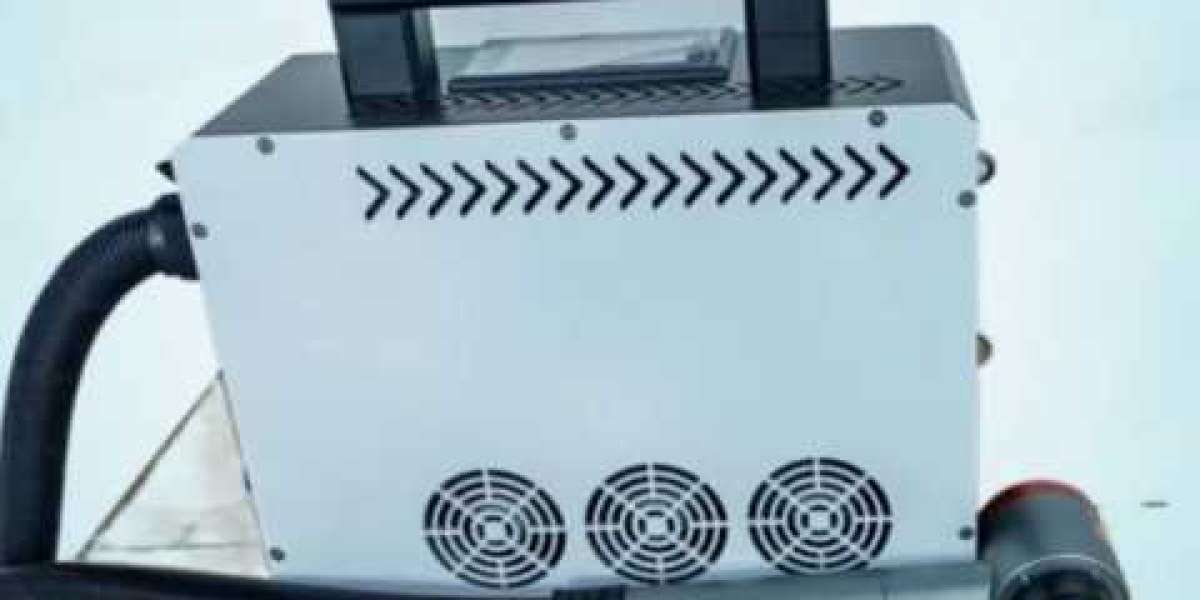Laser cleaning is a process that uses a focused beam of light to remove unwanted contaminants from surfaces. When applied to wood, the laser beam selectively targets layers of dirt, paint, varnish, or biological growth without damaging the underlying material. The Wood Laser Cleaning Machine works by delivering controlled pulses of laser energy that vaporize or detach unwanted materials through rapid thermal expansion, leaving the surface clean and intact.
This method is especially effective for sensitive restoration projects where preserving texture, grain, and natural color is critical. From antique wooden sculptures to heritage furniture, laser cleaning ensures the wood’s integrity remains untouched while eliminating impurities with unmatched accuracy.
How the Wood Laser Cleaning Machine Works
The working principle of a Wood Laser Cleaning Machine revolves around laser ablation. When the laser beam hits the contaminated surface, it heats the unwanted material at a much faster rate than the base wood. The sudden temperature difference causes the contaminant layer to expand and detach.
Key operational aspects include:
Laser Energy Control: The power and pulse duration are carefully adjusted to ensure contaminants are removed without affecting the wood’s cellulose structure.
Beam Focus: The beam can be precisely focused on micro-levels, making it suitable for intricate carvings and detailed surfaces.
No Contact Mechanism: Since the cleaning process is non-contact, there is no risk of scratching or mechanical wear.
Real-Time Adjustment: Modern systems come with monitoring features that allow operators to adjust parameters in real time for different wood types or contamination levels.
The process results in a naturally cleaned surface, ready for further finishing or preservation.
Applications of Wood Laser Cleaning Machines
The versatility of laser cleaning makes it suitable for a wide range of applications in both industrial and artistic fields. The Wood Laser Cleaning Machine is used in:
Cultural Heritage Restoration: Museums and conservationists use it to clean historic wood sculptures, altars, and frames without affecting the patina or structure.
Furniture Refurbishment: Laser cleaning restores aged furniture pieces by removing varnish, smoke stains, or mold, preparing them for refinishing.
Architectural Maintenance: In wooden ceilings, wall panels, and beams, the laser system removes layers of soot, pollution residues, and fungal growth effectively.
Art Restoration: Artists and curators rely on laser cleaning to restore valuable wooden art pieces with high precision.
Boat and Yacht Maintenance: Wooden decks and components in marine environments benefit from laser cleaning to remove algae, salt buildup, or old coatings.
This adaptability shows that the technology can serve industries where precision and material safety are crucial.
Why Wood Laser Cleaning is Transformative
The Wood Laser Cleaning Machine represents a technological shift from manual and chemical cleaning methods. Traditional cleaning techniques often involve solvents or abrasives that can damage the wood’s natural fibers or alter its surface texture. Laser cleaning, in contrast, introduces a highly controllable, residue-free method.
Because of its precision, laser cleaning can target microscopic layers without disturbing the underlying material. It enables restorers to achieve levels of cleanliness previously impossible using manual tools. Additionally, the process is dry and chemical-free, which means there’s no risk of chemical absorption or discoloration—a significant advantage for heritage and conservation projects.
Technical Aspects that Define Performance
The efficiency of a Wood Laser Cleaning Machine depends on several interrelated factors. Understanding these helps in achieving the desired cleaning quality and avoiding excessive energy use.
Laser Power Output: Determines how deep the laser penetrates and how fast it cleans. Lower power levels are typically used for delicate wood surfaces.
Pulse Frequency: Controls how often laser bursts hit the surface. Higher frequencies enable smoother cleaning for thin contaminants.
Wavelength: Influences how the laser interacts with different wood coatings or impurities. Machines designed for organic surfaces use specific wavelengths that minimize carbonization.
Scanning Speed: Adjusted according to contamination type. Slower scanning removes heavier coatings, while faster scanning suits light cleaning.
Cooling and Filtration Systems: Maintain stable operation and capture vaporized residues, ensuring a clean working environment.
Together, these parameters create a cleaning process that is both efficient and gentle on sensitive wooden materials.
Safety and Environmental Considerations
The Wood Laser Cleaning Machine operates without the use of chemicals, solvents, or abrasive materials. This makes it an environmentally responsible cleaning method, reducing waste and harmful emissions. The process generates minimal dust and can be paired with vacuum extraction systems for fume management.
Operators are protected through safety enclosures, laser shields, and integrated monitoring systems. When properly used, the technology poses no threat to surrounding areas or materials, making it suitable even in enclosed restoration environments.
Integration into Restoration and Manufacturing Workflows
Integrating a Wood Laser Cleaning Machine into an existing workshop or restoration setup is straightforward. The equipment can be stationary or portable, depending on the scale of the project. For furniture workshops, handheld laser systems provide flexibility to reach confined or curved surfaces, while larger automated systems suit architectural restoration projects.
Modern units are designed with intuitive interfaces that allow users to set cleaning parameters for different wood types such as oak, pine, or walnut. This adaptability enhances productivity and consistency, particularly in industrial manufacturing or refurbishment tasks where surface preparation quality directly impacts finishing results.
Economic Value in Long-Term Use
The adoption of a Wood Laser Cleaning Machine offers long-term operational value. While the initial investment is higher compared to traditional tools, its running costs are considerably lower. There are no consumables, replacement brushes, or chemical costs. Maintenance is minimal, and the durability of laser components ensures years of stable performance.
For businesses engaged in regular cleaning, refurbishment, or restoration, the cost savings and quality improvements justify the technology’s integration. Over time, the efficiency and precision achieved by laser cleaning contribute to faster project completion and reduced labor costs.
Industry Trends and Future Outlook
Laser cleaning technology continues to evolve rapidly. The demand for sustainable cleaning processes and preservation-friendly techniques is driving innovations in this field. Future Wood Laser Cleaning Machines are expected to become even more compact, energy-efficient, and automated.
Integration with AI-based scanning systems (for image-based material analysis), remote calibration, and portable battery-powered laser units are trends reshaping the cleaning landscape. As industries emphasize eco-conscious practices, laser cleaning is expected to become a standard choice in woodworking, conservation, and architectural restoration.
Final Thoughts
The Wood Laser Cleaning Machine stands at the forefront of modern restoration and surface cleaning methods. It blends precision with preservation, providing a reliable solution for cleaning delicate wood surfaces without physical contact or chemical exposure. From heritage restoration to industrial woodworking, this technology offers consistent, clean, and efficient results that meet the high standards of contemporary craftsmanship.
As more professionals recognize its value, laser cleaning is poised to become a permanent fixture in wood restoration and maintenance workflows. It symbolizes the balance between technological innovation and material preservation—ensuring that the natural beauty of wood continues to endure for generations to come.



